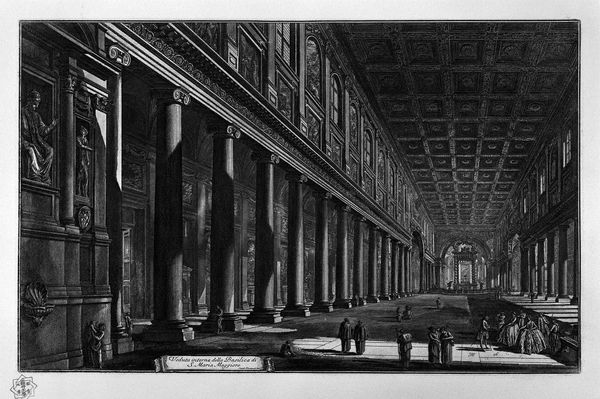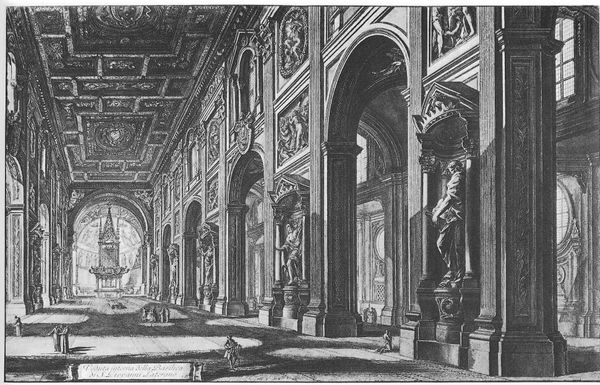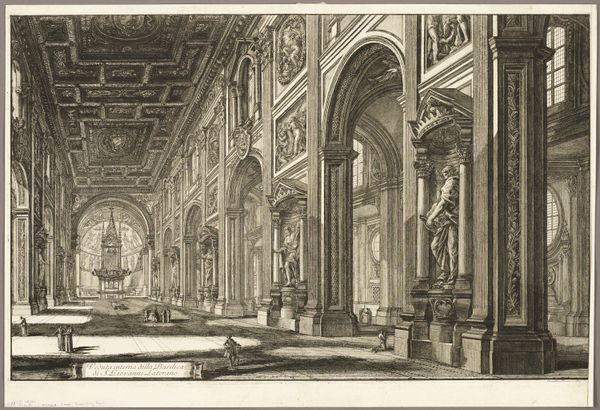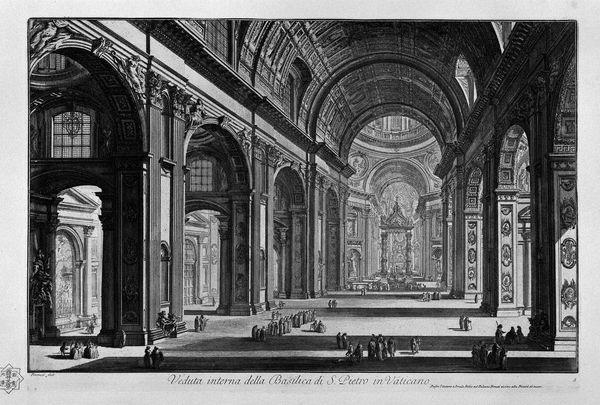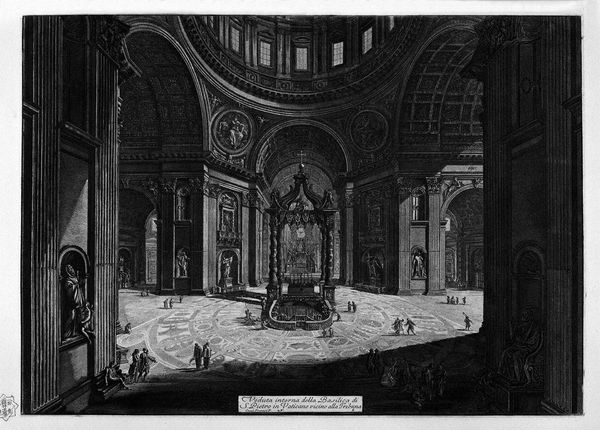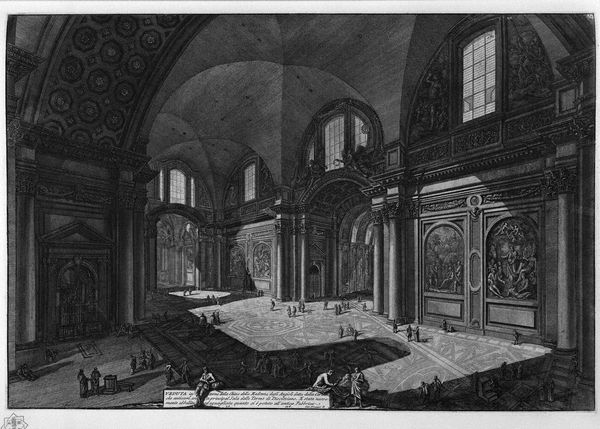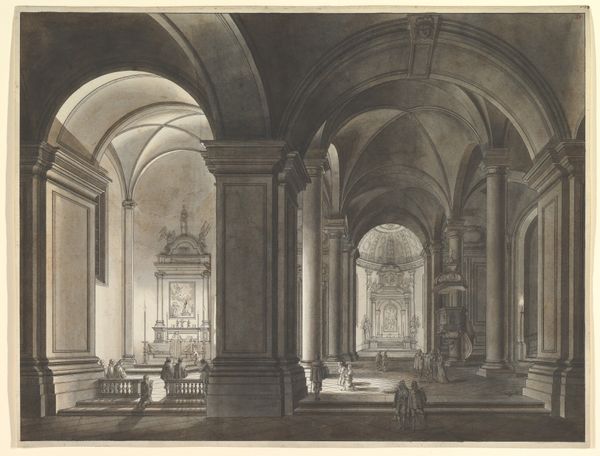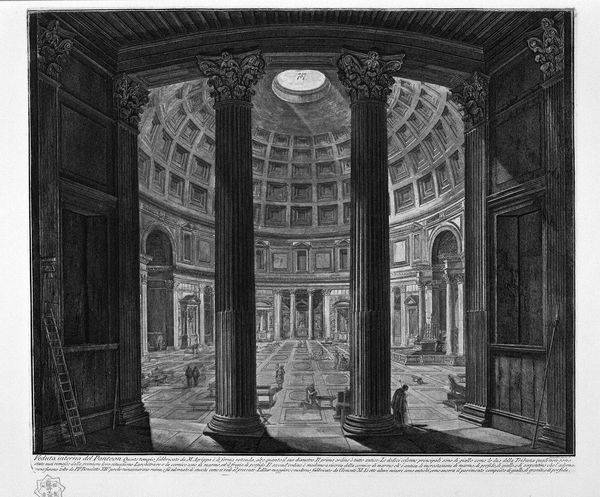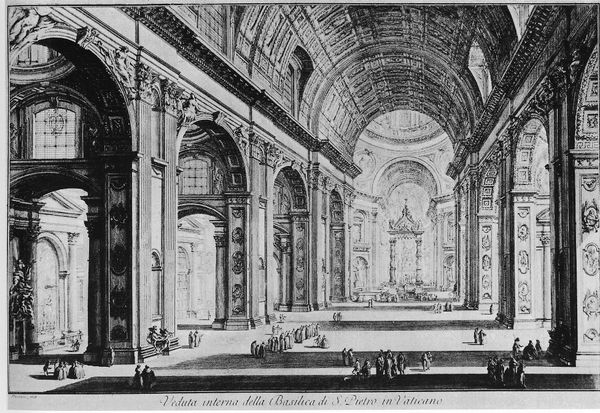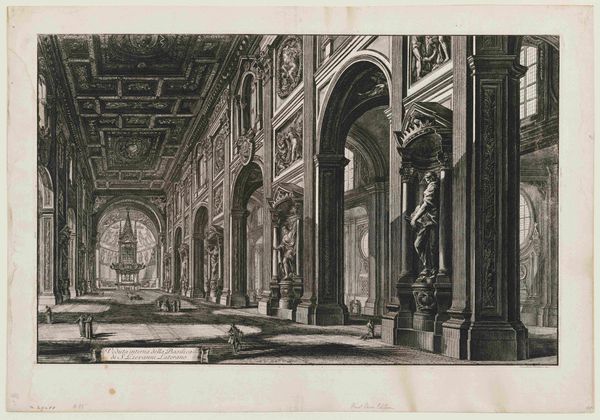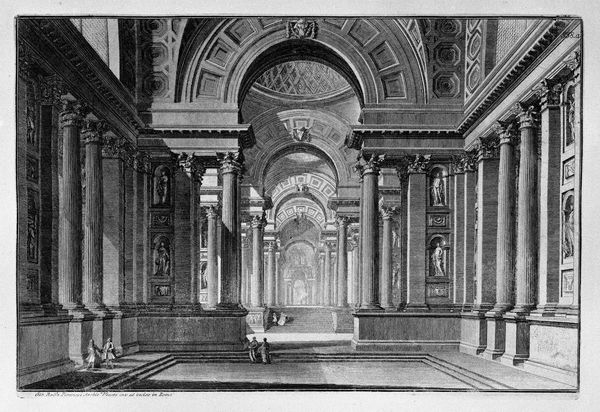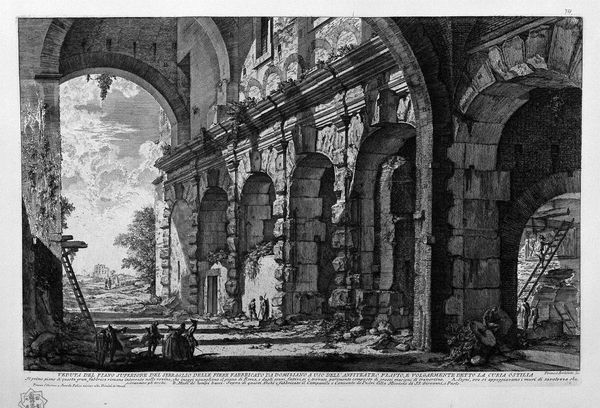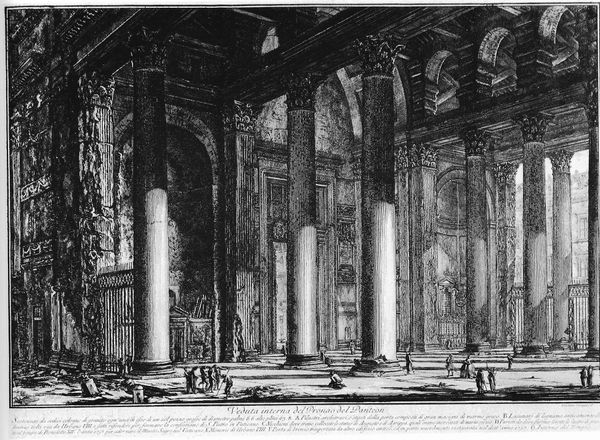
drawing, print, etching, photography, engraving, architecture
#
drawing
#
baroque
# print
#
etching
#
sculpture
#
perspective
#
form
#
photography
#
romanesque
#
black and white
#
arch
#
line
#
history-painting
#
engraving
#
architecture
Copyright: Public domain
Curator: Let's turn our attention to Giovanni Battista Piranesi's print, "Egyptian Obelisk in the Plaza of St. John Lateran." The etching offers an incredible, if imagined, view into the Basilica di San Giovanni in Laterano. Editor: What strikes me immediately is the immense scale. It evokes such a feeling of solitude, almost emptiness, despite the few figures scattered throughout the space. There is also a quality of darkness throughout this scene which to me signifies mourning. Curator: Absolutely. Piranesi employs stark contrasts of light and shadow to amplify that effect. Notice how the strong linear perspective emphasizes depth, pulling the eye towards the distant obelisk while dwarfing the human figures. His handling of line, creating textures, and varying the light provides incredible form. Editor: It’s as though the Basilica becomes a stage set, a constructed reality highlighting the power structures at play. The Obelisk itself becomes a symbol. Ancient Egyptian monuments recontextualized within the heart of the Catholic Church represent a complicated entanglement of power and domination—a silent witness to the history of colonialism and religious imposition. Curator: Precisely. Piranesi masterfully manipulates form and architectural elements to create drama and grandeur, regardless of his own underlying political critique. I am sure his attention was primarily in representing this play with space, depth and ornamentation. Editor: Perhaps, but it is important to view this grandeur not just in terms of aesthetics but how it operates in its socio-historical reality. This image, to me, begs the question of whose story is truly being told and what is being obscured by this seemingly innocent pursuit of beauty and perfection. Curator: It’s that tension—between aesthetic admiration and critical questioning—that makes engaging with this piece so intellectually rewarding. Editor: Indeed. It shows that no structure is apolitical. Even in rendering an established site, Piranesi reveals more about the hierarchies and forces which govern such space.
Comments
No comments
Be the first to comment and join the conversation on the ultimate creative platform.
